40 Most Mysterious Places in the Whole Entire World
The Nazca Lines, Peru
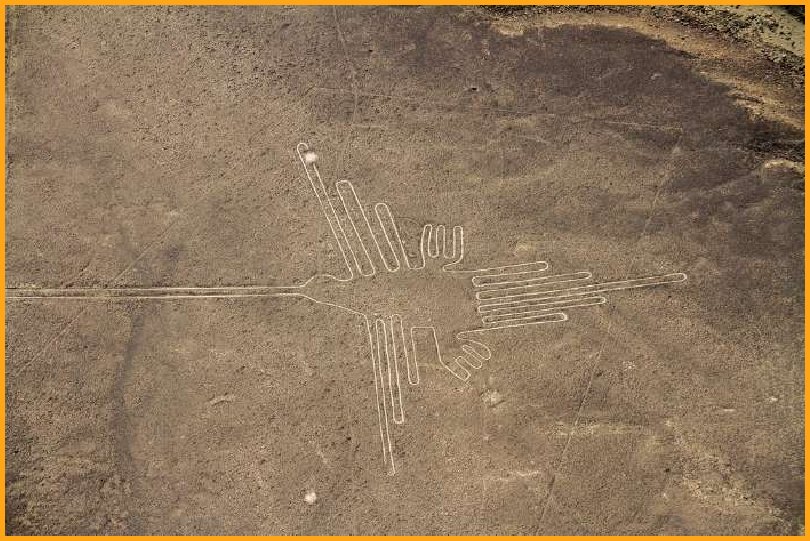
The lines, located in the arid Peruvian coastal plain, were scratched on the surface of the ground between 500 B.C. and A.D. 500, are among archaeology's greatest enigmas because of their quantity, nature, size and continuity, according to UNESCO. “The geoglyphs depict living creatures, stylized plants and imaginary beings, as well as geometric figures several miles long. They are believed to have had ritual astronomical functions.”
Eternal Flame Falls, Orchard Park, New York
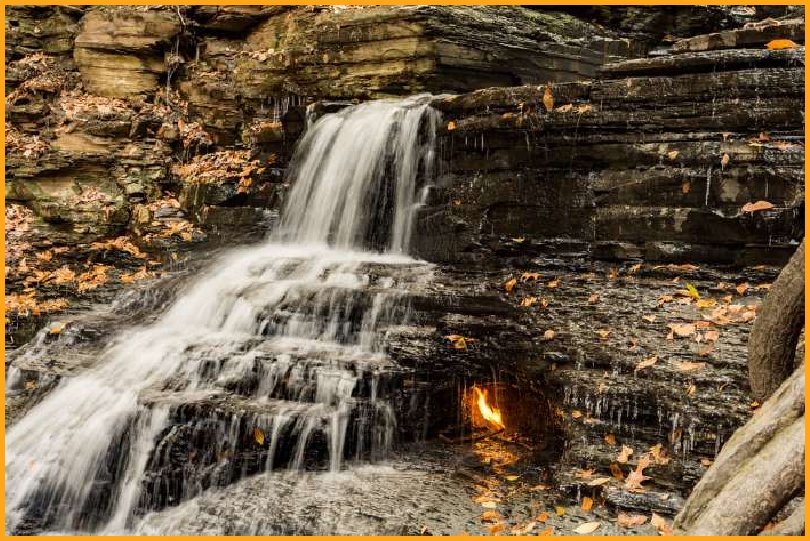
If you go to the waterfalls of Shale Creek in the southeast corner of Chestnut Ridge Park, you will notice a strange orange-red light behind the water and believe it to be an optical illusion. How is it that something is burning under water? You’ll actually smell the golden flame because it’s fired by methane gas escaping through the cracks. The water sometimes extinguishes the flame, but you can easily start it up again with a lighter.
Door to Hell, Turkmenistan
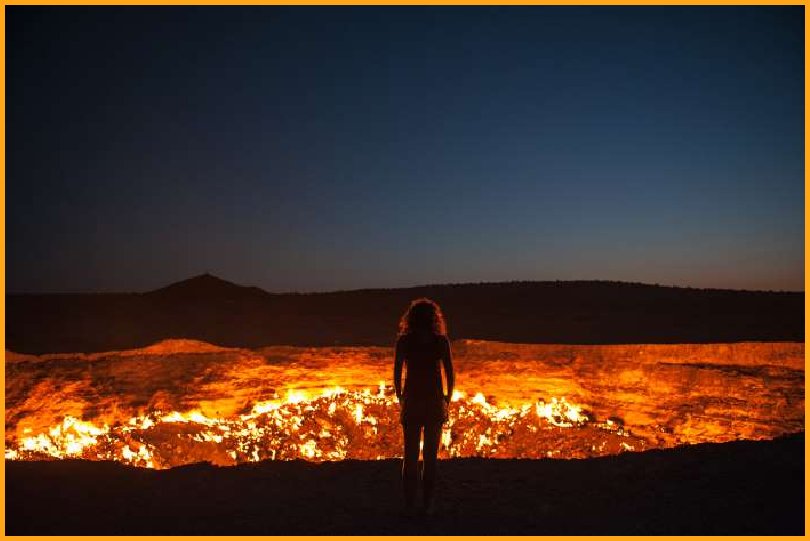
More than 40 years ago, a gaping, fiery crater opened up in the desert of northern Turkmenistan, most likely after a drilling mishap, according to the National Geographic. The Darvaza Crater, known as the Door to Hell, is still burning, which is an odd occurrence since the landscape is actually barren. Rumor has it that Soviet scientists set it on fire to burn off noxious gases under the ground but underestimated the amount of fuel that lay below. Turkmenistan has the sixth largest natural gas reserves in the world.
Blood Falls, Antarctica
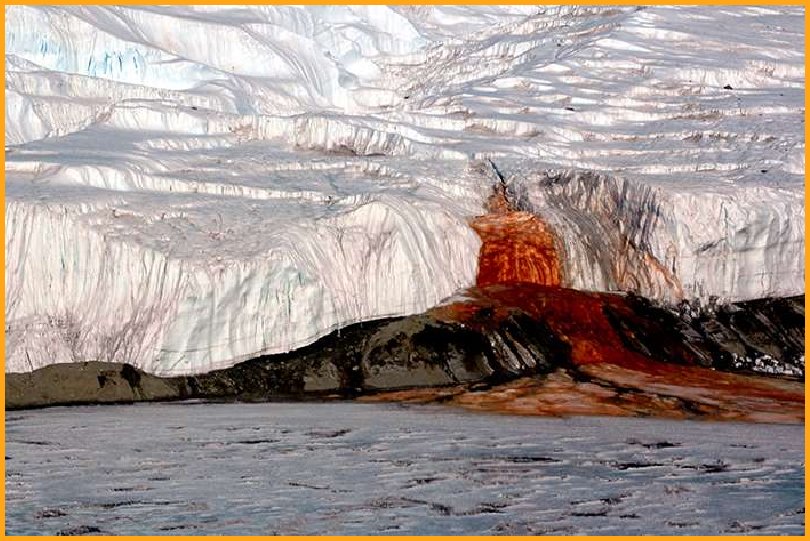
How is it that the coldest and driest place on the planet has a blood-red waterfall pouring down slowly in McMurdo Dry Valleys, some of the most extreme desert region on Earth? Scientists believed for many years the red algae gave the creepy color. Iron oxide is responsible for the hue, and research shows that the feature does contain strange bacterial life as the region may have a lot of salty and extremely cold groundwater.
Crooked Forest, Poland
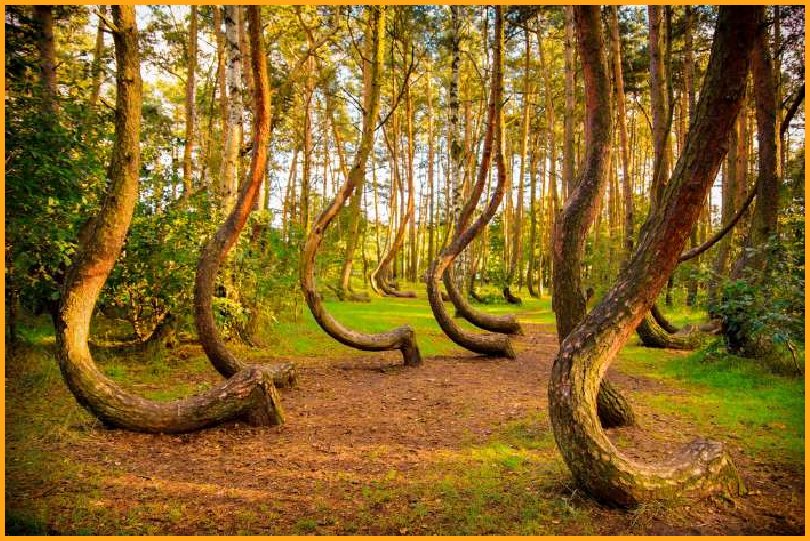
This forest got its name because of its crooked-shaped pine trees. There were approximately 400 pines planted around 1930. Some believe that a technique or human tool was actually used to make the trees grow this way, while others believe a snowstorm could have arranged the trees this way.
Bighorn Medicine Wheel, Wyoming

No written record to their purpose has been found. Two learning theories are that the wheels contain significant stellar and cosmological alignments, and/or the performance of specific rituals and ceremonies have been long forgotten. The Medicine Wheels represents harmony in Native American spirituality. The site is among the most well-preserved ancient Native American sacred locations.
Skellig Michael, Ireland

The mystic island, was named a UNESCO World Heritage Site in 1996. There are several Celtic and Christian legends about the rocky island, but what real story is not known. A groups of monks settled there in the 7th century building a settlement there entirely by hand. Why there or how they lived is still a mystery. Skellig Michael monastery was famously featured in “Star Wars: The Force Awakens.”
Spotted Lake Khiluk, B.C., Canada
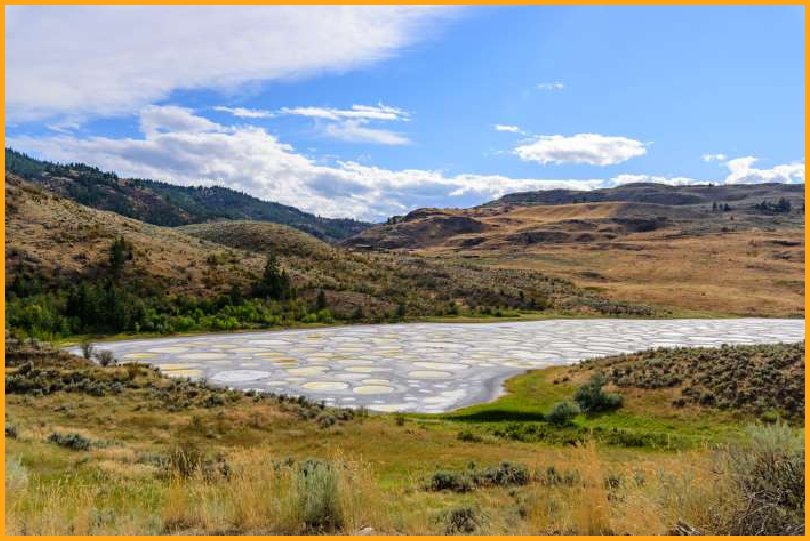
If you go to see this lake, located in British Columbia’s Okanagan Valley, in the spring or winter, you won’t be able to see how it’s different than other lakes. In the summer, however, as it gets hot and the water starts to evaporate, the lake turns into many tiny colorful pools of water with high concentration of different minerals.
Moeraki Boulders, New Zealand
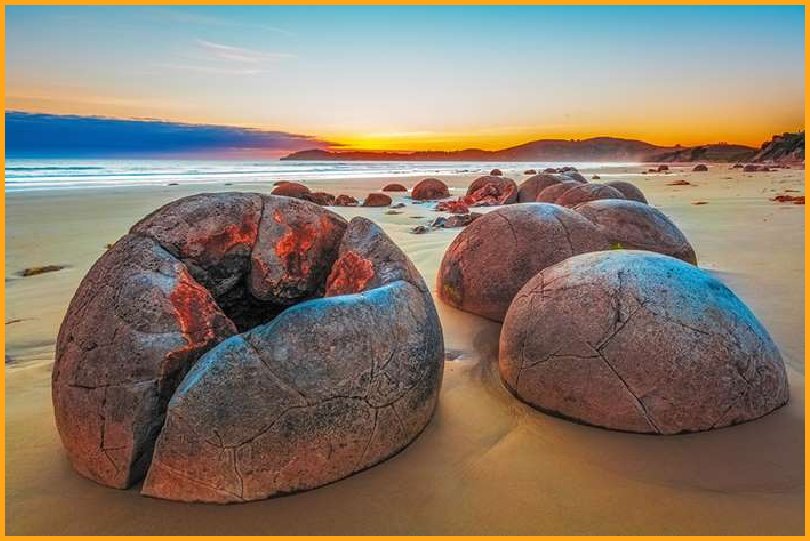
The Moeraki Boulders, originally formed in sea floor sediments about 60 million years ago, are large spherical “stones” scattered on Koekohe Beach near Moeraki on New Zealand’s Otago coast. They are actually concretions that have been exposed through shoreline erosion from coastal cliffs that back the beach. Each boulder weighs several tons and is up to 6 feet high
The Great Pyramids of Giza, Egypt
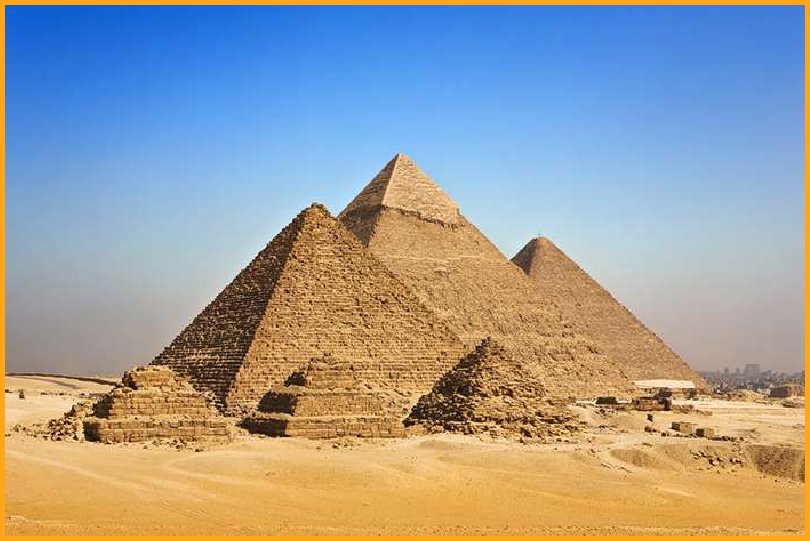
One of the most famous tourist attraction in the history of the world is still a mystery. What amazes people is how these ancient structures – huge by the standards then (the Khufu pyramid was the tallest building in the world until the 14th century) – were built at all. The stones weigh more than two tons.
Inuit village near Lake Anjikuni, Canada

The residents of an entire village disappeared without a trace. A trapper who had been there many times before, and met with the locals, found the place completely deserted one night with some fires still burning. There was no sign of anyone at all. All of their weapons and supplies were in place. The dogs were found frozen and starved to death even though there was food scattered around them. There are still no logical theories as to what happened. Some people assume a massive alien abduction.
Roanoke Island, North Carolina

The mystery is how a whole colony of people simply vanished just a few years after setting on the island in the late 1500’s. The word “Croatoan” had been carved on a post and the letters “CRO” scratched into a tree trunk – these were the only clues anyone had been there at all. New evidence suggests the people may have split into groups and assimilated into the Native American community.
Stone Spheres, Costa Rica

They are also called the Stone Balls, and remain one of the biggest mysteries in archelogy. The more than 300 spheres, which are almost perfectly round, range in size, and some of them weigh tons. They are apparently man-made but no one really knows for sure how or why they were made.
Michigan Triangle, Lake Michigan

This is like the Bermuda Triangle of Lake Michigan. It is known for mysterious disappearances of planes and ships along a part of the lake that may be the result of a supernatural triangle, according to one hypothesis. The area forms a triangle by drawing lines connecting Benton Harbor in Michigan, Manitowoc in Wisconsin and Ludington in Michigan.
Teotihuacan, Mexico
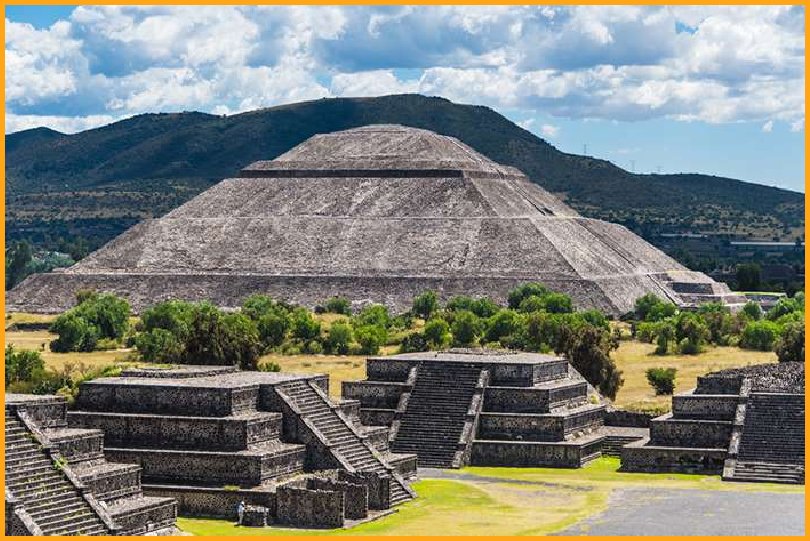
The holy city of Teotihuacan, meaning “the place where the gods were created,” is about 30 miles from Mexico City. Built between the 1st and 7th centuries A.D., it is characterized by the Temple of Quetzalcoatl and the Pyramids of the Sun and the Moon, according to UNESCO. Who actually built them and what they called the urban area is still a mystery.
Oregon Vortex, Oregon
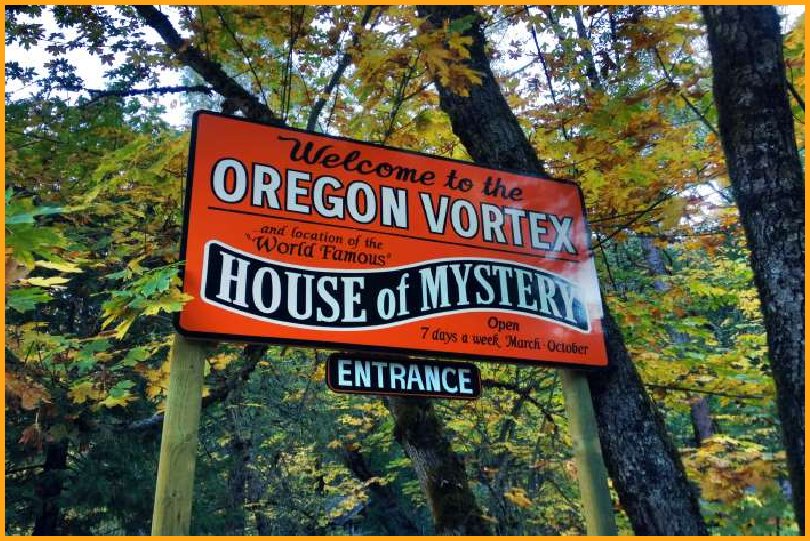
People have been going to the mysterious site since the 1930’s. The circular area of naturally occurring visual and perceptual phenomena is famous for creating strong feelings of vertigo. Nowhere in the circle do you normally stand straight; a person assumes a posture that inclines toward magnetic north. People appear in different sizes. Back in the day, horses of Native Americans, who referred to the area as the “Forbidden Ground” refused to go into it.
Devil’s Bridge, Germany.
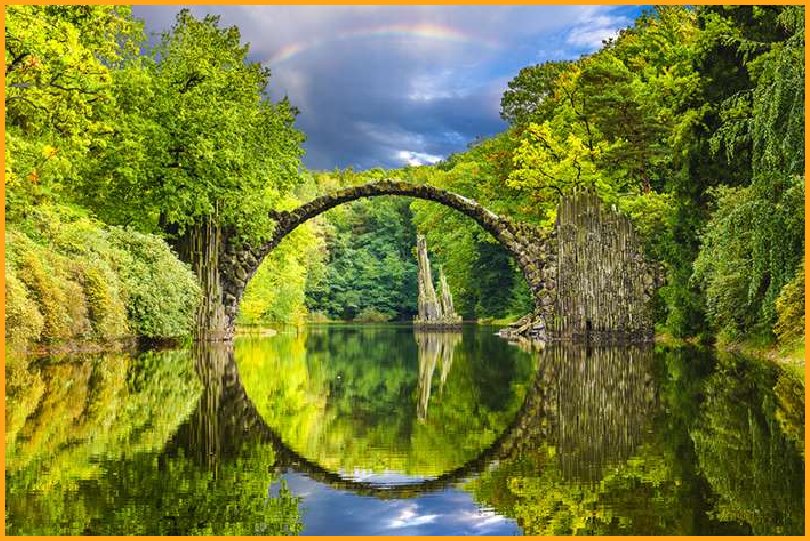
Anywhere you look at it, the bridge and its reflection on the water appear to form a perfect circle. The bridge, locally known as Rakotzbrücke, is located a few hours away from Berlin in Saxony.
Stonehenge, England
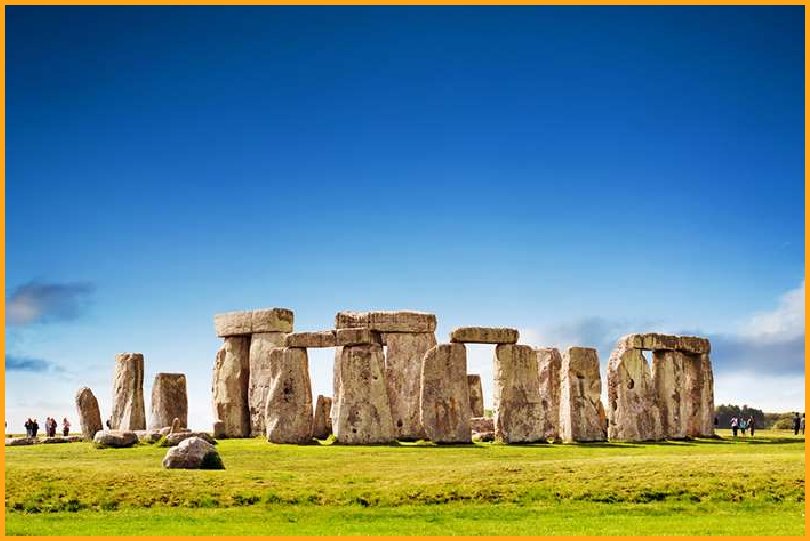
The prehistoric monument from more than 5,000 years ago is so famous that people often don’t see it as mysterious anymore. But how the massive stones in England were formed and placed there, and what was their purpose, is still speculated. Researchers have found animal bones and tools, suggesting scared rituals and prehistoric hunting. Nowadays, the Stonehenge is most popular for Summer Solstice celebrations.
Skinwalker Ranch, Utah

This site of mysterious paranormal activities and voices is not far from Ballard. Some have even dubbed the ranch “the strangest place on earth.” Claims about the property have been around for decades. They were about a family that moved there but soon after experienced a series of bizarre events, such as crop circles, strange lights and poltergeist activity. The National Institute for Discovery Science studied the claims but won’t say if they found evidence.
The Bermuda Triangle, Atlantic Ocean
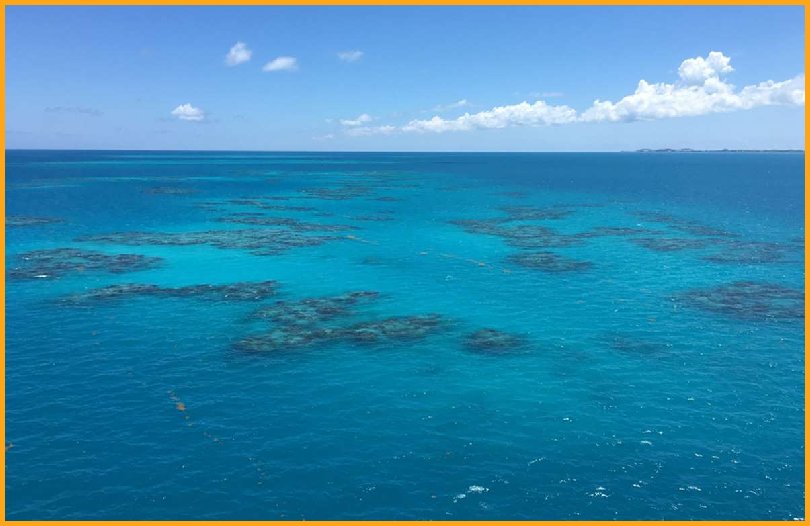
The Bermuda Triangle – or the Devil’s Triangle – is perhaps the most famous mystery in the world. It is the area of about 500,000 square miles between Bermuda (once known as the Isle of Devils), Miami and San Juan in Puerto Rico. Ships passing and planes flying are said to have vanished in thin air or deep sea without any explanation.
Island of the Dolls, Mexico

The island, known as Isla de las Munecas (Island of the Dolls) is dedicated to the lost soul of a poor girl who met her fate too soon in strange circumstances. Thousands of people live in the region south of Mexico City, but the tiny island is just home to hundreds of petrifying dolls with severed limbs, decapitated heads, and blank eyes. Local legend says that the dolls move their heads and arms. People have said that they had heard the dolls whispering and telling them to come down to the island.
Energy Vortexes, Sedona, Arizona

People looking for a psychic boost come to this place in the beautiful town of Sedona. The “vortexes” are mysterious areas of concentrated energy to which seekers of enlightenment are drawn, according to Arizona Leisure. Some believe that the energy produced as a result, encourages healing and feelings of well-being. The stronger the energy, the more the trees react by twisting. Popular vortex sites are Cathedral Rock, Bell Rock, Airport Mesa, and Boynton Canyon.
Area 51, Nevada
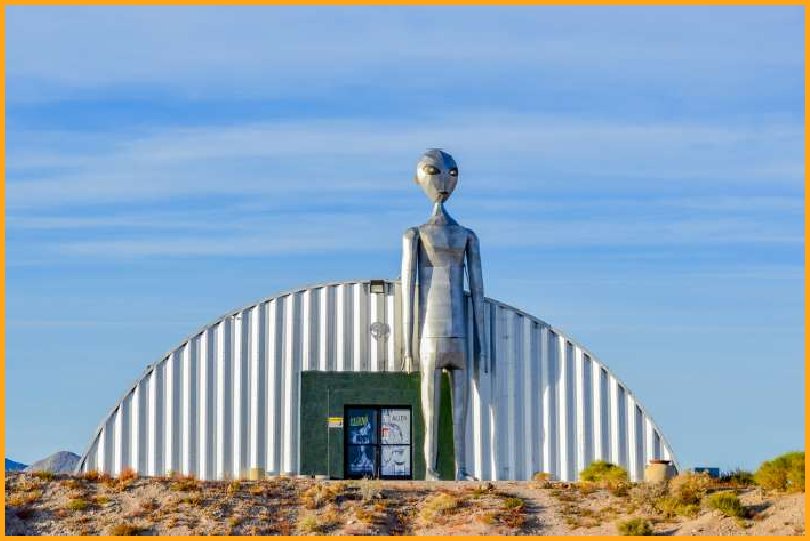
Area 51 near Roswell, New Mexico fuels rumors of a secret government operations and cover-up. The current purpose of the base is unknown. It has been said that it supports the development of testing experimental aircraft and weapons systems.
Roswell, New Mexico

A UFO is supposed to have crashed in Roswell in 1947. Rancher W.W. “Mack” Brazel said he found debris. The pieces seemed to be metal. He said he saw a shallow trench several hundred feet long had been gouged into the ground. The remains of aliens are supposed to have been found there. Roswell hosts an annual UFO festival in the summer.
Lake Natron – Petrifying Lake, Tanzania

This is the lake that turns birds into stone. Lake Natron is a shallow salt and soda reservoir in Tanzania, near the border with Kenya. It is extremely dangerous. The temperature can reach 140F and its pH level is 10. The water is so caustic it can burn the skin and eyes of animals that aren't adapted to it, according to Live Science. And deposits of sodium carbonate also act as a preservative, leaving the dead animals looking mummified. The lake is, however, a safe breeding place for flamingos.
Coral Castle, Homestead, Florida
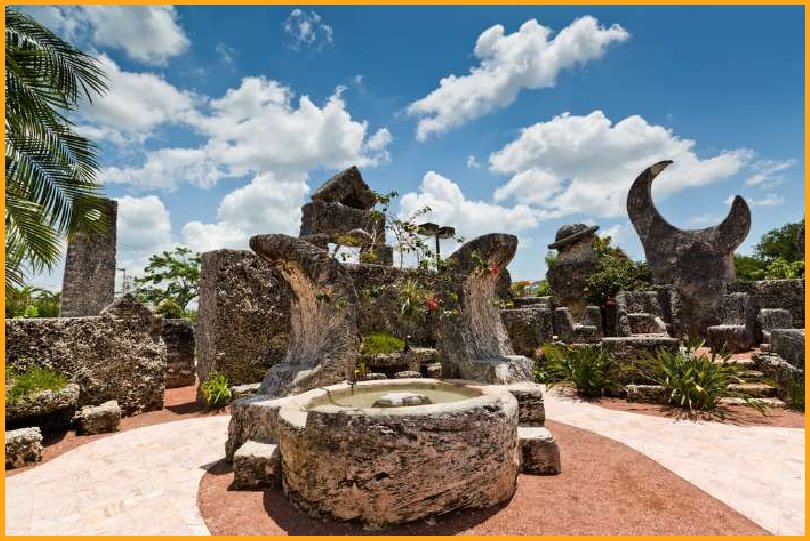
This place is an everlasting mystery. What is still not understood is how a single man, Latvian immigrant named Edward Leedskalnin built the Coral Castle, which is made of many limestone boulders, some of which weighed about 15 tons. It took him more than 25 years. Ed would only say that he knew how the Great Pyramids in Egypt were built, but the secret died with him.
Pine Gap, Australia

This is a U.S. intelligence facility. No wonder no one really knows what exactly is being done there, which is what makes it mysterious. Joint Australian-U.S. facility monitors communications on four continents. About 1,000 people work there.
Moai Statues, Easter Island, Chile
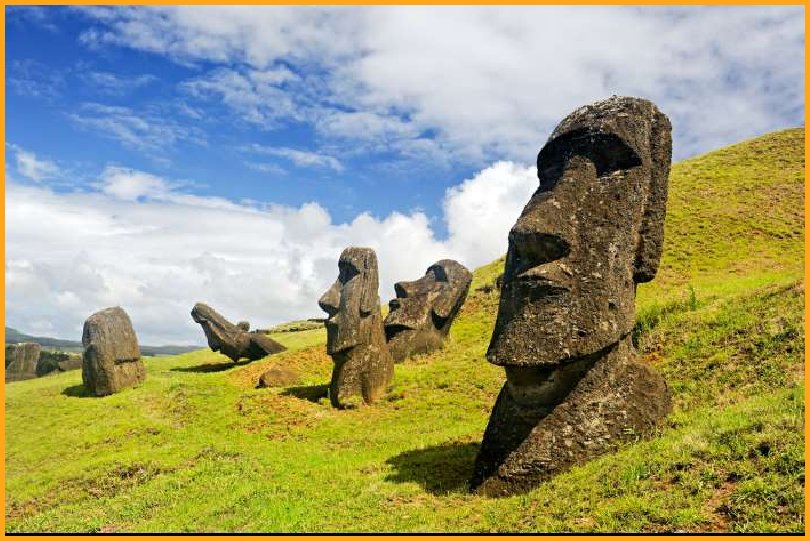
The now-barren island was once populated by the Rapa Nui civilization (and many trees) and is home to around 6,000 permanent residents. It’s famous for its 887 giant statues that were created by the Rapa Nui people. The figures are some of the strongest remaining evidence of the thriving civilization. All statues are accessible by car or bike after the 5.5-hour flight from Santiago, Chile.
Magnetic Hill, Moncton, New Brunswick

You have to be very careful if you choose to drive to the bottom of this iconic hill. Stories about what happens there have been around since early 1900’s. As impossible as it sounds, your car will roll uphill. “And it doesn’t just work on cars – vans, trucks and even tour buses roll upward in total defiance of natural law,” according to Tourism New Brunswick.
Racetrack Playa, Death Valley, California
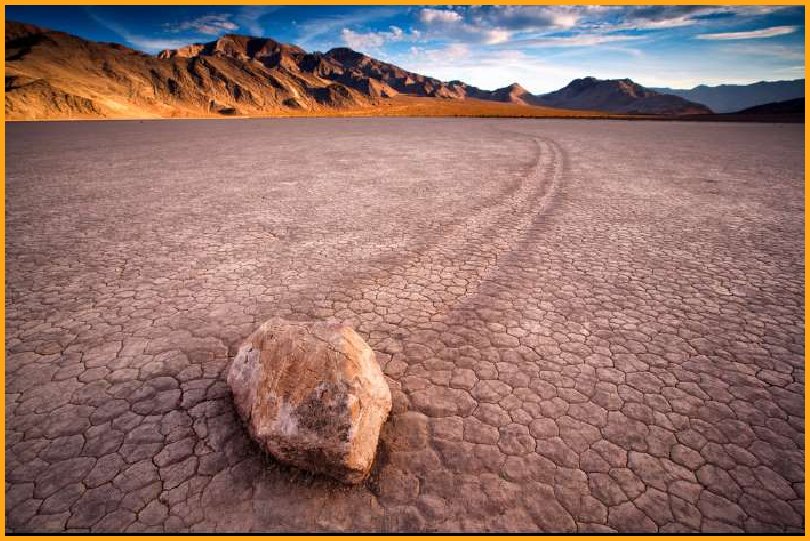
Located in a remote valley between the Cottonwood and Last Chance Ranges, the Racetrack is a place of spectacular beauty and mystery. The Racetrack is a playa, a dry lakebed, best known for its strange moving rocks. It looks like they “sailed” through the valley. The shape of trails indicates that the rocks move during times when the floor is covered with a very soft mud after it has rained.
Hessdalen Lights, Norway

Speculation about the mysterious flashes of light have made the tiny village famous. Some people believe the lights are caused by extraterrestrial activity, according to Visit Norway. One scientist thinks bubbles of ionized gas are made when sulphurous fumes from the River Hesja react with humid air, forming the balls of light.
Richat Structure, Mauritania
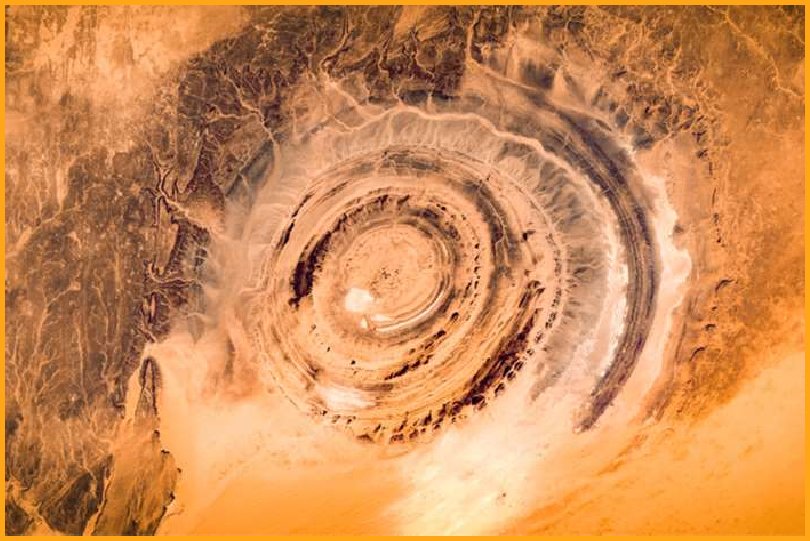
The Richat Structure is also known as the Eye of the Sahara. The giant circular feature in the desert forms a conspicuous bull's-eye in the otherwise rather featureless expanse of the desert, according to NASA. Many people say the structure, with a diameter of about 30 miles, looks like an outsized fossil. According to a former theory, Richat was a meteorite impact structure because of its high degree of circularity. However, it is now thought to be merely a symmetrical uplift that has been laid bare by erosion.
Jatinga, India
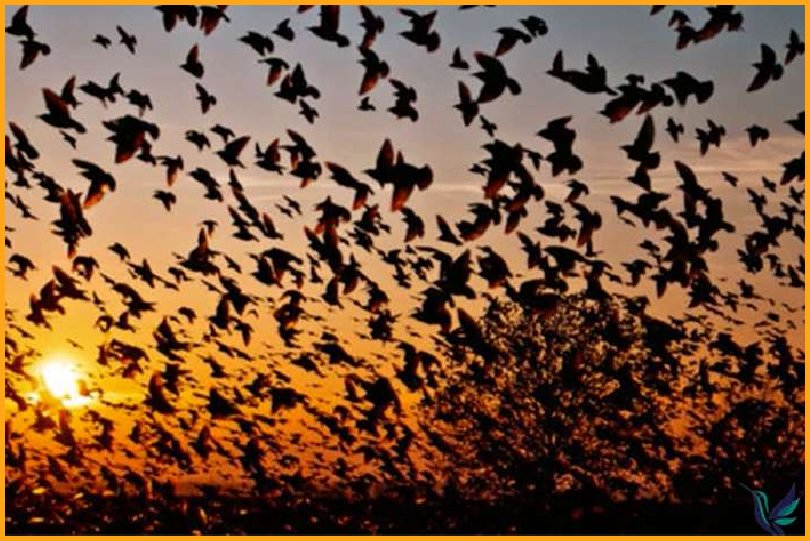
The odd bird suicide phenomenon of Jatinga, a small village in India, between September and November each year baffles locals and tourists because birds are not known to be suicidal. During these late monsoon months, several migratory and local birds commit mass suicide at the village.
Devil's Tower, U.S. National Monument, Wyoming
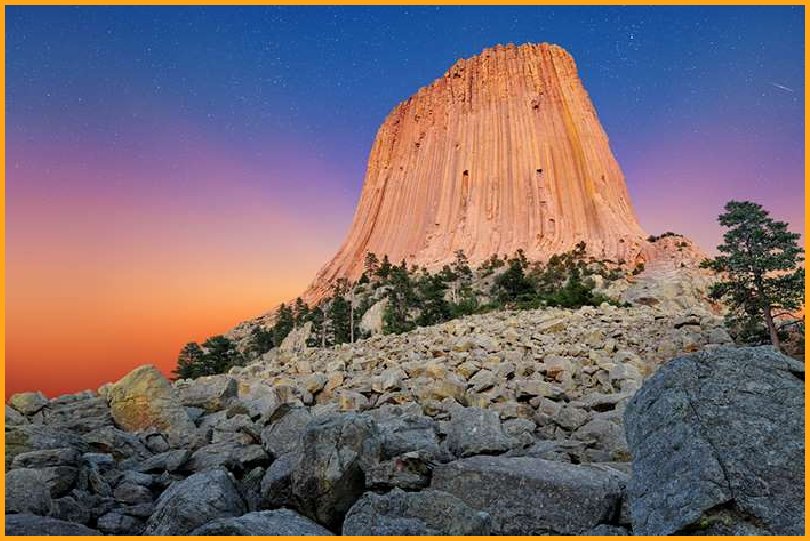
The Devil’s Tower is an astonishing geologic feature that protrudes out of the rolling prairie surrounding the Black Hills. It is the first national monument in the country, established in 1906. This site is considered Sacred to the Lakota and many other tribes that have a connection to the area, according to the NPS. Hundreds of parallel cracks make it one of the finest traditional rock climbing areas in North America. Scientists agree that giant rock formed as a result of the intrusion of igneous material, but how that happened is not clear.
Plain of Jars, Laos
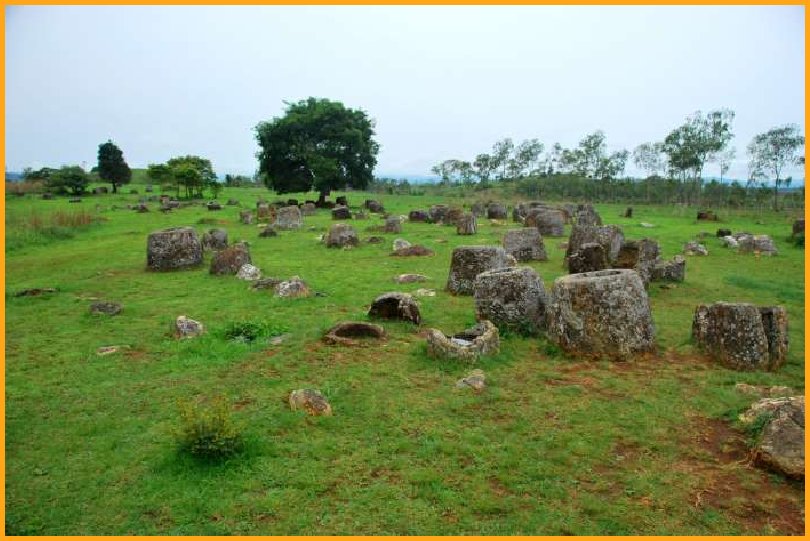
The ancient origin of the giant stone jars that are scattered over many miles of plains and hills is unknown. The original inhabitants were Austro-Asiatic people, who lived by hunting and gathering. The mystery is who created the stone jars. There are many random theories, one of which is that they were made to brew vast quantities of rice wine to honor people’s independence, according to Lonely Planet. The jars were shaped from solid stone dating back to the Southeast Asian Iron Age between 500 BC and 200 AD.
Uluru, Australia

Uluru is an enormous sandstone rock that is about 1,140 feet high. Australians call it The Rock. Australian Aborigines believe it’s one of the last remaining homes of the creators of earth. Ayers Rock, another name for it, is close enough to the geographic center of the country, making it the supreme symbol of Australia’s Outback.
Slope Point, New Zealand

This is the most southern point of New Zealand’s South Island. The trees look like they are being bashed by wind because they are. They are consistently smashed with fierce winds blowing up from Antarctica, giving them their surreal and permanent shape.
Yonaguni Monument, Japan

Scuba divers love to explore the mysterious underwater ruins of the Yonaguni Monument. Maybe this is another Atlantis? With what appear to be staircases and terraces, this underwater rock formation is evidence of an ancient civilization. It’s been around for about 5,000 years but it wasn’t discovered until 1985.
Point Pleasant, West Virginia

The mystery surrounding Mothman, who is a creature allegedly seen in the Point Pleasant area in 1966 and 1967, still lure people. He was said to have been 7 feet tall with a barrel chest and a piercing shriek. He was also seen at the Silver Bridge Collapse in December of 1967 when more than 40 people died. Some say he may have caused the disaster; others that he tried to warn people about it.
Loch Ness, Scotland
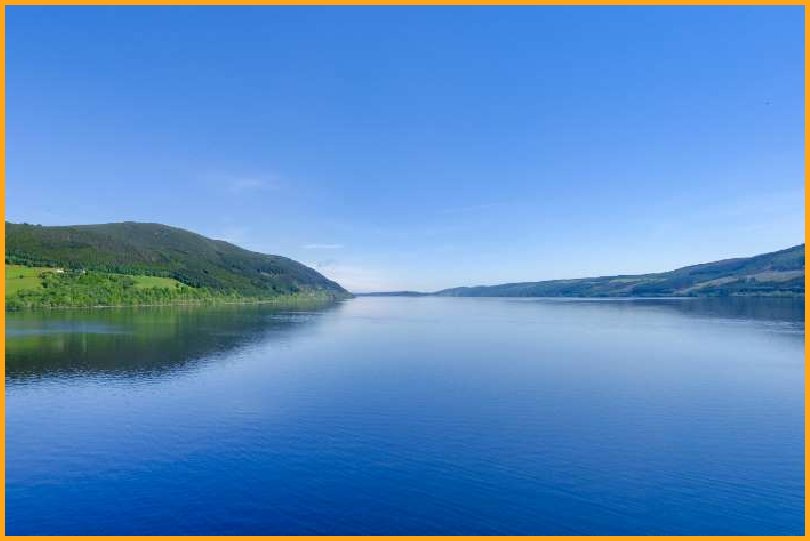
Loch Ness is a large, deep, freshwater loch in the Scottish Highlands. Nessie’s existence has never been proven. Scientists have yet to find anything. Even if you don’t see any evidence of a monster, the area is gorgeous and worth a trip. This is the largest Scottish loch by volume. It gets as deep as 755 feet.